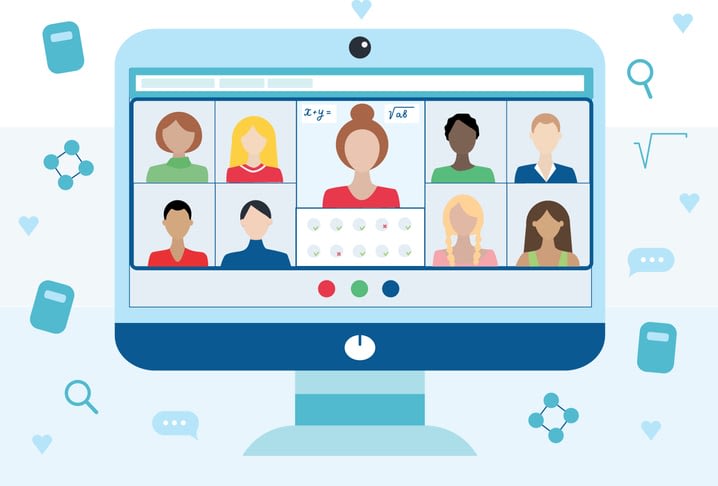An Ideal Customer Profile, or ICP, is the secret sauce to focusing your sales and maximizing efficiency. But, what is an ICP? Think of it as a snapshot of your dream customer—the one that’s most likely to buy, stay loyal, and grow with your business. In the following sections, we’ll unpack why an ICP is essential and how to create one that aligns perfectly with your sales goals.
Key takeaways
- An Ideal Customer Profile (ICP) is a comprehensive tool that outlines the qualitative and quantitative traits of a business’s most valuable customers, guiding sales teams to prioritize high-value prospects and personalize outreach efforts for effective targeting.
- While an ICP provides a data-driven framework for identifying optimal companies based on shared characteristics and needs, a buyer persona offers qualitative insights into the individual decision-makers within those companies, and together they inform more precise sales and marketing strategies.
- Crafting a Sales ICP is a dynamic process involving analysis of existing customers, market research, and ongoing testing and validation to ensure the ICP accurately reflects customer needs and market trends, in turn improving lead qualification, sales messaging, and account-based marketing efficacy.
Understanding ICP: a comprehensive overview

An Ideal Customer Profile (ICP) is not just a theoretical concept—it’s a practical tool that empowers your sales team to concentrate on high-value prospects and tailor their communications. Think of it as a compass guiding your sales and marketing teams on their journey to success. Not only does it help you identify your perfect customer, but it also drives your marketing and sales efforts in the right direction, targeting your ideal customers.
The efficacy of an ICP is rooted in its components. It goes beyond mere demographics; it taps into the behavior patterns, needs, and pain points of your most valuable customers. It paints a holistic picture of your ideal customer, offering insights into their identity, motivations, and behaviors that drive their buying decisions. It’s like having an X-ray vision of your target audience, enabling you to create strategies that resonate with them and meet their needs effectively.
The purpose of an ICP
Imagine being able to steer your sales team through the sales process with precision, pinpointing the most probable customers for purchase. That’s the power of an ICP. It serves as a valuable tool for your sales team, helping them navigate through the complex maze of leads and prospects to find the ones with the highest conversion potential.
However, the advantages of an ICP extend beyond this. It also plays a pivotal role in resource prioritization within a sales strategy. Guiding your sales reps to allocate their efforts toward qualifying and prioritizing leads with higher conversion potential optimizes the utilization of resources for nurturing valuable prospects. The result? A significant improvement in conversion rates and the ultimate goal of any sales team—a successful sale.
Key components of an ICP
ICPs are made up of various components that offer a 360-degree view of your ideal customer. One of these components is firmographics. These are characteristics such as industry, company size, and location that contribute to defining the optimal customer in a business context. So, whether you’re focusing on large corporations in the tech industry, like a software company, or small businesses in the retail sector, firmographics help you narrow down your target audience.
Alongside firmographics, behavioral patterns also play a crucial role in shaping your ICP. They offer insights into how your ideal customer engages with your product or service, their purchasing behaviors, and their susceptibility to market trends. Yet, that’s not all it does.
Demographics and psychographics further add depth to your ICP, providing insights into the age, gender, educational background, values, beliefs, and lifestyles of your ideal customer. By identifying the needs and pain points of your ideal customer, your business can customize its products or services to effectively tackle those specific issues, thereby enhancing the probability of a successful sale and ensuring customer satisfaction.
Sales ICP vs. buyer persona: clearing the confusion

Despite the apparent similarities between ICP and buyer persona, their roles in your sales strategy are distinct. An Ideal Customer Profile emphasizes quantitative aspects to identify companies that align with shared characteristics and needs, while a buyer persona offers qualitative insights into individual buyers within these ideal companies. It’s like comparing a macro lens to a micro lens; both are essential for capturing the complete picture, but each offers a different perspective.
ICPs and buyer personas work hand in hand to guide your sales and marketing strategies. While ICPs help you identify the optimal companies to focus on, buyer personas delve into the psychological and behavioral characteristics of the individuals responsible for decision-making within those companies. In simple terms, ICPs center around companies, while personas center around people. Together, they form a powerful duo that maps out a strategy for sales success.
Sales ICP: a data-driven approach
Sales ICP primarily focuses on numerical data. It’s a data-driven methodology designed to assist your sales team in prioritizing leads and efficiently allocating resources. Think of it as a spotlight in a dark room, illuminating your path and pointing you towards the most promising leads.
However, the scope of Sales ICP isn’t limited to lead prioritization. Creating a sales ICP also provides your sales team with the opportunity to allocate more time to a select number of accounts and concentrate on cultivating enduring relationships with the most significant customers. And the best part? You can create your own Sales ICP by following a few recommended procedures, such as listing your top customers, conducting customer analysis, identifying key attributes, and understanding customer challenges. This data-driven approach can enhance your sales performance through cost reduction, improved efficiency, and the ability to focus on the most promising opportunities for quicker results.
Buyer persona: a qualitative representation
Unlike the numerical focus of Sales ICP, buyer personas explore the qualitative traits of your customers. A buyer persona is a detailed profile representing the ideal representation of your target audience. It’s like a character sketch of your ideal customer, offering insights into their motivations, preferences, and decision-making processes.
The creation of a buyer persona involves qualitative research, a process that involves the collection and analysis of non-numerical data such as interviews, surveys, and observations. This provides valuable and actionable insights about your customer segment, enabling you to understand not just who your customer is, but also why they make the decisions they do.
Crafting your sales ICP: a step-by-step guide

Now that we’ve explored what an ICP is and how it differs from a buyer persona, it’s time to roll up your sleeves and start crafting your own Sales ICP. The process involves three key steps: analyzing existing customers, conducting market research, and testing and validating the ICP.
By following these steps, you’re essentially embarking on a journey to discover your ideal customer. It’s like conducting a treasure hunt, where the prize is a well-defined, data-driven profile that will guide your sales efforts towards high-value prospects and personalized communications.
Analyzing existing customers
The initial step towards formulating your Sales ICP involves a detailed examination of your existing customer data. This involves identifying the most suitable current customers and discerning the common characteristics they share. It’s like looking for patterns in a puzzle; once you identify them, everything falls into place.
However, the analysis of existing customers extends beyond mere data review. It also requires engaging with your customers directly to get a deeper understanding of their needs and preferences. This could involve carrying out surveys, conducting interviews, or even having informal conversations with your customers. By diving deep into your existing customer data, you can identify patterns and shared characteristics that can shape your ideal customer profile.
Market research and customer insights
After pinpointing shared characteristics among your existing customers, it’s crucial to conduct market research. This involves examining key trends, analyzing statistical data and industry reports, and conducting comprehensive research.
Market research is like a compass, guiding your marketing team toward a deeper understanding of customer pain points, needs, and expectations. It’s an essential step in the creation of your Sales ICP, providing valuable insights that can help you continuously adapt your ICP to meet the evolving needs of your customers.
Testing and validation
The concluding step in developing your Sales ICP entails testing and validation. This involves monitoring customer response and evaluating whether your ICP aligns with their needs. It’s like conducting a reality check, ensuring that your ICP is not just theoretically sound, but also practically effective.
The significance of testing and validation is paramount in the evolution of your Sales ICP. It not only ensures that your ICP is effective, but also helps you refine it further based on customer feedback and response. So, don’t skip this step. After all, the ultimate test of your ICP’s effectiveness lies in its ability to drive your sales efforts towards high-value prospects and convert them into loyal customers.
Leveraging ICPs for sales success

Now that you’ve crafted your Sales ICP, it’s time to put it to use. Leveraging your ICP can significantly enhance your sales success, by improving lead qualification, customizing sales messaging, and enhancing account-based marketing.
Imagine being able to sift through a sea of leads and quickly identify the ones that are most likely to convert. Or being able to craft sales messages that resonate with your target audience because they’re tailored to their specific needs and preferences. These are just some of the ways in which leveraging your ICP can drive your sales success.
Improving lead qualification
A prominent advantage of an ICP is its capacity to:
- Augment lead qualification
- Pinpoint high-quality leads
- Assess potential buyers
- Help transform leads into loyal customers
However, refining lead qualification transcends mere identification of high-quality leads. It’s also about focusing on high-converting deals, or deals that have a high likelihood of turning into successful sales. By leveraging your ICP, you can focus your sales efforts on these high-converting deals, ultimately driving your sales success.
Customizing sales messaging
ICP can also bolster your sales success by assisting in personalizing your sales messaging. A well-crafted ICP can provide valuable insights into your target audience, enabling you to tailor your marketing messages and outreach efforts to align with their specific needs and preferences.
Customizing your sales messaging involves:
- Developing personalized sales messages that resonate with your ideal customer
- Understanding their motivations, preferences, and decision-making processes
- Crafting sales content that aligns with these insights
- Leveraging your ICP to customize your sales messaging
- Increasing the relevance of your communications
- Better resonating with your target customers
Enhancing account-based marketing
In conclusion, ICP can be instrumental in boosting your account-based marketing initiatives. Account-based marketing is a strategic business marketing approach that focuses resources on a specific set of target accounts within a market, utilizing personalized campaigns to engage with individual companies.
By incorporating your ICP into your account-based marketing strategies, you can focus on the most valuable prospects, customize your messaging and content, and use resources more effectively. Whether you’re personalizing video marketing or utilizing physical gifts to target B2B buyers, your ICP can provide the insights you need to engage and convert top-tier prospects into customers.
Adapting and evolving your ICP

The development of your ICP marks the start of a journey. In order to maintain its effectiveness and relevance, it’s crucial to continuously adapt and evolve your ICP. This involves monitoring market trends, gathering customer feedback, and making necessary adjustments to ensure that your ICP continues to align with the evolving needs and expectations of your customers.
Consider your ICP as a dynamic and evolving construct. It needs to grow and adapt in order to stay relevant. Just like a plant needs water and sunlight to thrive, your ICP needs regular monitoring and adjustments to remain effective.
Monitoring market trends
Keeping track of market trends is crucial for the continuous adaptation and evolution of your ICP. By staying abreast of industry developments, understanding evolving customer needs and preferences, and identifying new market prospects, you can ensure the continued relevance of your ICP in a dynamic market landscape.
Tools like BuzzSumo and Semrush’s Market Explorer can be incredibly useful for monitoring market trends and making necessary adjustments to your ICP. By staying informed about recent market trends like the increased prevalence of data-driven marketing and advancements in artificial intelligence, you can adapt your ICP to stay ahead of the curve.
Gathering customer feedback
Another significant element in the ongoing adaptation and evolution of your ICP involves collecting customer feedback. By reaching out to customers directly for feedback and refining your ICP based on this feedback, you can ensure that your ICP continues to align with customer needs and expectations.
Effective methods for integrating customer feedback into the enhancement of your ICP include:
- Conducting surveys and interviews
- Refining your ICP based on data analysis and feedback from successful deals
- Regularly gathering feedback to improve its effectiveness over time
Remember, your ICP should be a reflection of your customers’ needs and expectations. By gathering their feedback and incorporating it into your ICP, you can ensure that it continues to serve its purpose effectively.
Kumospace’s integral role in developing your ICP

Kumospace offers a range of features that are instrumental in crafting an effective Ideal Customer Profile (ICP) for sales teams. These features align closely with the key steps of analyzing existing customers, conducting market research, and testing and validating the ICP:
Analyzing existing customers
- Data integration and analysis: Kumospace provides tools for integrating and analyzing existing customer data such as the online whiteboard. This tool enables sales teams to visually map out and analyze customer data, fostering a deeper understanding of existing customer profiles. It also allows teams to collaboratively identify patterns and trends by organizing and connecting various data points, such as customer behaviors, preferences, and demographics, on a shared, visual platform.
- Customer engagement tools: The platform offers various ways to engage with customers, such as through surveys, virtual meetings, or interactive sessions. These allow for a deeper understanding of customer needs and preferences, contributing valuable insights for the ICP creation process.
Conducting market research
- Insight gathering capabilities: Kumospace facilitates comprehensive market research by providing interactive meeting spaces, which support screen sharing, online whiteboards, and team chat.
- Collaborative features for team research: Teams can collaborate within Kumospace to analyze and discuss market research findings. This collaborative environment ensures that insights are shared and integrated into the ICP effectively.
Summary
In conclusion, the importance of an Ideal Customer Profile (ICP) in sales cannot be overstated. From helping you identify your perfect customer to guiding your sales efforts, from enhancing lead qualification to customizing sales messaging, an ICP can be a powerful tool in driving your sales success. But remember, crafting an ICP is just the beginning. In order to maintain its effectiveness and relevance, it’s crucial to continuously adapt and evolve your ICP, monitoring market trends and gathering customer feedback. So, start crafting your ICP today, and unlock the secrets to sales success.
Frequently asked questions
An ICP in business stands for ideal customer profile and it helps businesses identify the most suitable customers for their products or services, guiding their marketing and sales strategies.
An example of an ICP, or ideal customer profile, could be businesses within the B2B tech industry for a SaaS company. This helps define the type of client that would benefit most from the product or service.
ICP users refer to the ideal types of companies that would benefit the most from your products or solutions.
In startups, ICP stands for Ideal Customer Profile, which refers to a detailed description of the ideal potential customer that a business wants to attract and serve. It helps in identifying who is most likely to benefit from the company's products or services.
Craft your own Sales ICP by analyzing existing customers, conducting market research, and testing and validating the ICP to ensure its effectiveness. Utilize Kumospace's interactive meeting spaces and whiteboarding features for collaborative team sessions, where you can conduct market research, brainstorm, and refine your ICP based on shared insights.





